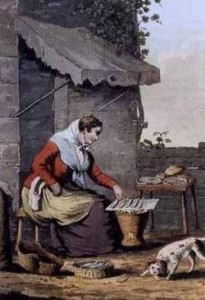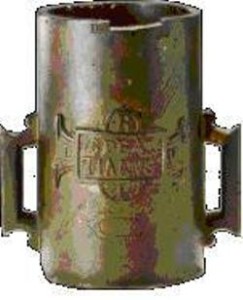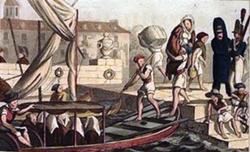Abbreviations used in prices databases
alm = almude (mudd, liquid measure)
alq = alqueire (bushel, dry measure)
arr t = arr tel (a pound weight of sixteen ounces – 16 oz, approximately 459 grams)
arrob = arroba (a thirty-two pounds weight, approximately 15 kg )
can = canada (liquid measure equal to 1/12 of the almude)
doz = dozen
gr = grams
gs = grams of silver
lt = litre
kg = kilogramme
on a = ounce
quart = quartilho (pint, liquid measure equal to 1/48 of the almude)
rs = r is (Portuguese monetary unit)
unit = unity
Abbreviations used in wages databases
gs = grams of silver
HTS = Hospital de Todos os Santos (All Saints Hospital)
other inst = other institutions
rel inst = religious institutions
rs = r is (Portuguese monetary unit)
Abbreviations of sources
Lisbon databases
AMLx = Arquivo Hist rico Municipal de Lisboa
ANTT = National Archive (Arquivo Nacional da Torre do Tombo)
ASCMAlm = Arquivo Hist rico da Santa Casa da Miseric rdia de Almada
ASCMLx = Arquivo Hist rico da Santa Casa da Miseric rdia de Lisboa
ATC = Arquivo Hist rico do Tribunal de Contas (Lisbon)
BPA = Biblioteca da Ajuda (at the National Palace of Ajuda, Lisbon)
CMoeda = Arquivo da Casa da Moeda de Lisboa
Porto databases
ADP = Arquivo Distrital do Porto
AHMP = Arquivo Hist rico Municipal do Porto
ASCMP = Arquivo da Santa Casa da Miseric rdia do Porto
Coimbra databases
AHMC = Arquivo Hist rico Municipal de Coimbra
ASCMC = Arquivo da Santa Casa da Miseric rdia de Coimbra
AUC = Arquivo da Universidade de Coimbra
Images
AS = Antiquary Association (London)
BML = Biblioteca Medicea Laurenziana (Medicea Laurenziana Library, Florence, It lia)
BN = Biblioteca Nacional (National Library, Lisbon)
Col AAF = Collection A. A. Ferreira (Gaia)
Col PNC = Collection Prof Nabais Conde (Coimbra)
GHCP Gabinete de Hist ria da Cidade do Porto (History Cabinet of the City of Porto)
JZLx = Jardim Zool gico de Lisboa (Lisbon Zoo)
Lx = Lisbon
MC = Museu da Cidade (Lisbon City Museum)
MNAA = Museu Nacional de Arte Antiga (Ancient Art National Museum, Lisbon)
MNMC = Museu Nacional de Machado de Castro (Machado de Castro National Museum, Coimbra)
MN,CM = Museu Numism tico Portugu s, Casa da Moeda (Numismatic Museu, Mint House, Lisbon)
Notes on the compilation of the series in the PWR database data
The sources
The series of prices, wages and rents presented here were obtained from the archives of a variety of institutions, namely hospitals, charitable institutions (Miseric rdias), convents and monasteries, the royal palaces, municipal bodies (including those which regulated markets), the University of Coimbra, seminaries, and from legislation in general.
The Method
Throughout the collection of these data preference was always given to those arising out of market transactions. Occasionally, however, when there was no alternative, we resorted to information of a non-market nature, such as prices or wages administered by public bodies, at the national and local levels. These are signalled in the base with an asterisk.
Prices
Prices shown are annual and always refer to the principal city of the three regions selected for this study. In other words, they are no “national” prices. For each year,the modus operandi was to collect information for all the transactions which occured in one or more institutions during the four months which were chosen as being representative of the seasons of the agricultural calender. This principle, however, was not applied rigidly, given that sufficient data was not always available.
Each annual price was obtained by dividing the total value of all the transactions in that year, for which prices and quantities were available, by the the total amount of merchandise transacted. In other words, it is a mean of prices weighted by quantities.
Wages
Like prices,wages are annual and always refer to the principal city of the three regions selected for this study. For each year,the modus operandi is similar to the one followed for prices.
Wages are divided into two categories: daily wages and monthly or annual salaries. Daily wages are, generally, dry wages. Quite the opposite, annual salaries often include supplements (housing, foodstuffs, fees) which were recorded and added to cash salary in column B.




